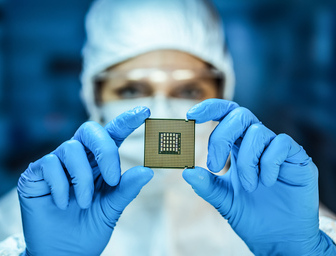IC Substrates Solutions
The intricate patterns of advanced chips are often too dense to be directly attached to a PCB. IC substrates resolve this issue by providing a dense design that allows the chip to connect on one side and interface with the PCB on the other. To achieve these dense designs, we utilize cutting-edge circuit materials such as Ajinomoto Build-up Film (ABF) and advanced manufacturing techniques like modified Semi-Additive Process (mSAP) and Semi-Additive Process (SAP).



